DIHYDROFOLIC ACID
Synonym(s):7,8-Dihydropteroyl-L -glutamic acid;Dihydropteroyl-L -glutamic acid;FAH2
- CAS NO.:4033-27-6
- Empirical Formula: C19H21N7O6
- Molecular Weight: 443.41
- MDL number: MFCD00083619
- SAFETY DATA SHEET (SDS)
- Update Date: 2025-12-11 11:21:09
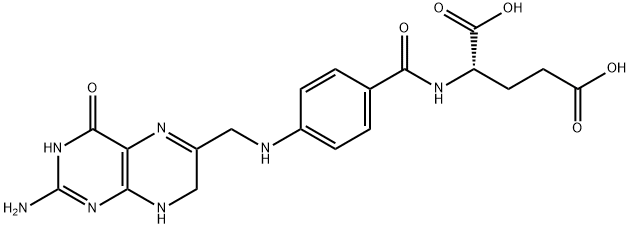
What is DIHYDROFOLIC ACID?
The Uses of DIHYDROFOLIC ACID
Dihydrofolic Acid is an intermediate in mammalian conversion of dietary folic acid to tetrahydrofolate by dihydrofolate reductase (DHFR). Folic acid (FA) and Dihydrofolic acid (FAH2) are substrates of dihydrofolate reductase(s) which reduce them to tetrahydrofolate (THF).
The Uses of DIHYDROFOLIC ACID
antidote to methotrexate toxicity
The Uses of DIHYDROFOLIC ACID
Dihydrofolic Acid is an intermediate in mammalian conversion of dietary folic acid to tetrahydrofolate by dihydrofolate reductase (DHFR). Folic acid (FA) and Dihydrofolic acid (FAH2) are substrates of dihydrofolate reductase(s) which reduce them to tetrahydrofolate (THF).
What are the applications of Application
Dihydrofolic acid is an intermediate in purine and pyrimidine biosynthesis
Definition
ChEBI: Dihydrofolic acid is a folic acid derivative acted upon by dihydrofolate reductase to produce tetrahydrofolic acid. It interacts with bacteria during cell division and is targeted by various drugs to prevent nucleic acid synthesis. It has a role as an Escherichia coli metabolite and a mouse metabolite. It is a conjugate acid of a dihydrofolate(2-).
General Description
Intermediate in mammalian conversion of dietary folic acid to tetrahydrofolate by dihydrofolate reductase (DHFR). In bacteria, dihydrofolic acid is generated from 7,8-dihydropteroate by dihydrofolate synthetase.
Biochem/physiol Actions
Folic acid (FA) and dihydrofolic acid (FAH2) are substrates of dihydrofolate reductase(s) which reduce them to tetrahydrofolate (THF), which in turn supports ‘one carbon′ transfer. Tetrahydrofolates are required for de novo synthesis of purines, thymidylic acid and various amino acids and for post-translational methylation (epigenetics).
Purification Methods
DHFA is best purified by suspending (1g mostly dissolved)) in ice-cold sodium ascorbate (300mL of 10% at pH 6.0, prepared by adjusting the pH of 30g of sodium ascorbate in 150mL of H2O by adding 1N NaOH dropwise using a gla
Properties of DIHYDROFOLIC ACID
| Melting point: | >160°C (dec.) |
| Density | 1.69±0.1 g/cm3(Predicted) |
| storage temp. | -20°C |
| solubility | 0.1 M NaOH: 10 mg/mL, slightly hazy, orange |
| form | Solid |
| pka | pKa 1.38(H2O t=25 I=0.10) (Occasionally);3.84(H2O t=25 I=0.10) (Occasionally) |
| color | Light Beige to Beige |
| BRN | 69017 |
| Stability: | Air Sensitive, Hygroscopic, Temperature Sensitive |
Safety information for DIHYDROFOLIC ACID
| Signal word | Warning |
| Pictogram(s) |
 Exclamation Mark Irritant GHS07 |
| GHS Hazard Statements |
H315:Skin corrosion/irritation H319:Serious eye damage/eye irritation H335:Specific target organ toxicity, single exposure;Respiratory tract irritation |
| Precautionary Statement Codes |
P261:Avoid breathing dust/fume/gas/mist/vapours/spray. P264:Wash hands thoroughly after handling. P264:Wash skin thouroughly after handling. P271:Use only outdoors or in a well-ventilated area. P280:Wear protective gloves/protective clothing/eye protection/face protection. P302+P352:IF ON SKIN: wash with plenty of soap and water. P305+P351+P338:IF IN EYES: Rinse cautiously with water for several minutes. Remove contact lenses, if present and easy to do. Continuerinsing. |
Computed Descriptors for DIHYDROFOLIC ACID
DIHYDROFOLIC ACID manufacturer
New Products
Indole Methyl Resin tert-butyl 9-methoxy-3-azaspiro[5.5]undecane-3-carboxylate Boc-His(Boc)-OH 2-CTC Resin 4-Chloro-7-tosy1-7Hpyrrolo[2,3-d]pyrimidine 5,7-Dibromo-1H-indole 2,5-dichloro-N-hydroxy-4,6-dimethylpyridine-3-carboximidamide 2,2-Dimethoxy-7-azaspiro[3.5]nonane hydrochloride 4-chloromethyl-5-methyl-1,3-dioxol-2-one (DMDO-Cl) R-2-BENZYLOXY PROPIONIC ACID 1,1’-CARBONYLDIIMIDAZOLE 1,1’-CARBONYLDI (1,2-4 TRIAZOLE) N-METHYL INDAZOLE-3-CARBOXYLIC ACID 4-((2-hydroxyethyl)thio)benzoic acid 1-(TERT-BUTOXYCARBONYL)-2-PYRROLIDINONE Methyl 6-methylnicotinate 3-Pyridineacrylic acid tert-Butyl carbazate TETRAHYDRO-2H-PYRAN-3-OL 2-((4-morpholinophenylamino) (methylthio) methylene) malononitrile 3-(4-morpholinophenylamino)-5-amino-1H-pyrazole-4-carbonitrile 2,4-dihydroxybenzaldehyde 1,3-Diethyl-1,3-Diphenylurea Methyl 2-methylquinoline-6-carboxylateRelated products of tetrahydrofuran


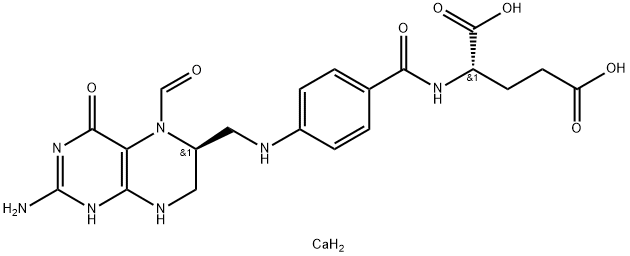
![2-[4-[(2-amino-4-oxo-5,6,7,8-tetrahydro-1H-pteridin-6-yl)methyl-formyl-amino]benzoyl]aminopentanedioic acid](https://img.chemicalbook.in/CAS/GIF/2800-34-2.gif)

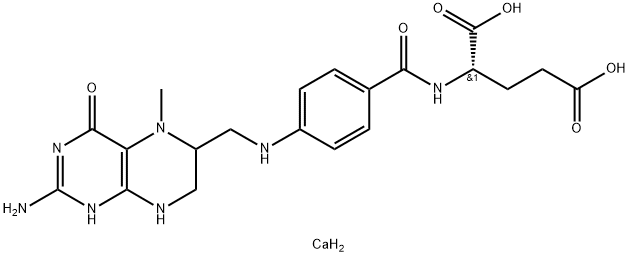
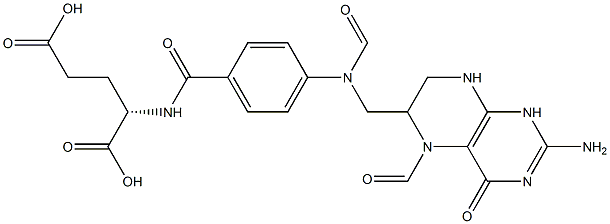
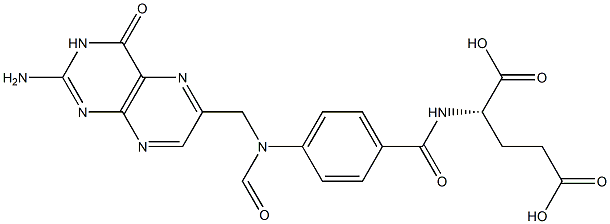
You may like
-
 Dihydrofolic acid CAS 4033-27-6View Details
Dihydrofolic acid CAS 4033-27-6View Details
4033-27-6 -
 7,8-Dihydrofolic Acid 98%View Details
7,8-Dihydrofolic Acid 98%View Details
4033-27-6 -
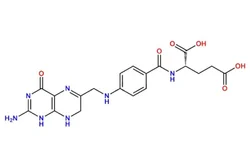 99% Dihydrofolic acid (working standard), Analytical GradeView Details
99% Dihydrofolic acid (working standard), Analytical GradeView Details
4033-27-6 -
 Pyridine 99.5% HPLC /UV SpectroscopyView Details
Pyridine 99.5% HPLC /UV SpectroscopyView Details
110-86-1 -
 Piperazine Spot supply, best priceView Details
Piperazine Spot supply, best priceView Details
110-85-0 -
 Dibutyl PhthalateView Details
Dibutyl PhthalateView Details
84-74-2 -
 Imidazole Spot supply, competitive priceView Details
Imidazole Spot supply, competitive priceView Details
288-32-4 -
 Thiourea 99% ARView Details
Thiourea 99% ARView Details
62-56-6
